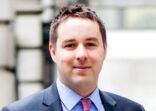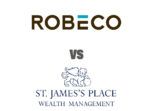The wealth of high net worth individuals in Asia-Pacific hit a record high of $14trn in 2013, up 18% year-on-year, according to a CapGemini report.
With an increasing number of financial products in the region to serve those wealthy individuals, it’s important for a fund house to clarify the target clientele, said Yun, executive director, head of investment for Asia at Bank of Montreal Private Bank.
“Some fund houses register to only market to retail clients or to professional investors, which can help distinguish them in the market.
“As a gatekeeper, we don’t necessarily want those funds that are widely marketable in the retail branch. We try to differentiate [the private bank] from retail.”
New fund houses also need to have local support to serve clients.
“If the main support is in Switzerland or London, for example, the time zone difference can cause problems if a client has questions regarding the fund. I’d like someone in Asia to answer the questions right away because clients in Asia are quite demanding. Having local support can be a plus for fund distribution.”
A new fund house in the region would also benefit from one or two flagship funds, he said.
“If the flagship fund has consistently delivered desireable performance, that can help with the distribution of other funds in that house.”
Matching client to fund
Fund selection at BMO is done at the head office in Toronto, which provides a list of approved funds. Yun then selects funds according to the client’s profile.
Although the Toronto office builds the list, Yun can influence which funds appear on the list.
“If we find a fund we like, we recommend it to the team in Toronto for due diligence. If it passes the tests, we provide them information about the fund and discuss it further.”
Yun’s team does not deal directly with the client, but with the relationship manager. “Our teams help the RM to market some products and we give them an idea of the market.”
Yun added that risk assessment for private banking clients has become more rigorous.
The bank gives each selected fund a risk classification that is put in an internal record. The client’s risk profile is then matched to the type of funds he can invest in.
“If the client does not have experience investing in derivatives, for example, we cannot recommend those type of funds to them. Volatility is also watched closely. We have to be very careful what type of funds we select.”
“Sometimes in an advisory account the client only wants one stock. They sell when it goes up then ask again for the next stock. That’s not really portfolio construction. So we look at their risk profile and investment horizon and let them know the portfolio they should be in.
With discretionary portfolios, the emphasis is on liquidity. “We make it simple and transparent, with no tie up of capital. We make sure the client can get the money out in a week so we don’t invest into real estate or commodities.”
Fund manager criteria
For the advisory business, Yun’s team will use Morningstar’s platform to rank all preapproved fund managers and run their historical performance in various time periods on a risk-adjusted return basis.
“We’ll also approach the fund managers and ask their investment views and compare their performance with other funds. We’ll look to see if there have been any fund manager changes or change of strategy, or anything that we need to be aware of.”
Risk adjusted performance is crucial.
“Not just the absolute return, but the volatility of the fund. You might find a fund has a great return but also great downside as well.
“We would rather select a fund manager with consistent return and low volatility. A fund manager with consistent return and high volatility – first rank to third rank and back, for example – we want to avoid.
“Investors don’t like volatility and when there’s a 5-6% drop the client will call you right away and ask why.
“We also feel more comfortable in long-only funds, with transparency you can see day-to-day.
“With hedge funds, there’s less transparency. You get a report on a quarterly basis and cannot redeem on daily basis. Even if you could, the money is not in pocket until three months later. Anytime there’s a lack of transparency, it reduces the appetite of our clients.”
















